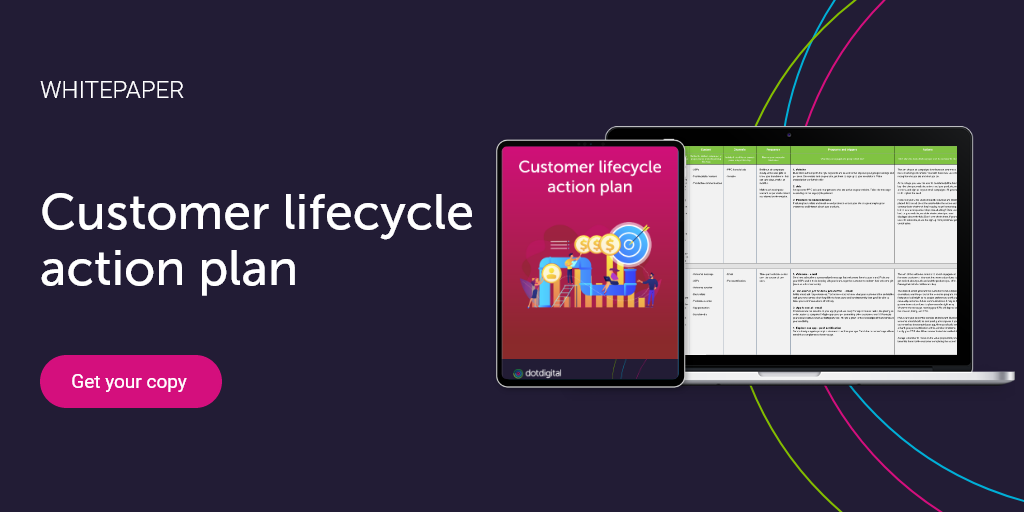Marketing automation for the financial services sector


Financial services are one of the world’s most important and influential sectors. Covering a broad range of activities, the target audiences for finance firms are as varied as they come. Whether you’re in commercial banking, insurance, or asset management, targeted and relevant marketing is essential for your business’ continued growth and development. Email marketing for finance brands will help you expand you reach and amplify your message. Marketing automation empowers brands in the financial services sector to form stronger relationships with customers.
Why marketing automation for financial services?
Marketing automation is an essential tactic for all marketers in every sector. From independent practitioners looking to grow their books to international firms with diverse portfolios, marketing automation empowers you to optimize your marketing performance for growth and customer retention.
When you adopt a holistic marketing automation approach, you’ll be able to reach prospects and clients at the key stages of their journey and so much more:
1. Timely messaging
Timing is everything. Thanks to marketing automation platforms, you can build intuitive workflows that ensure email subscribers receive the right message at the right time. You can set reminders about loan payments or insurance policy renewals. Triggered messaging can be used when prospects fill in forms or place inquiries. Overall, marketing automation will save your team time, while ensuring clients and prospects remain engaged.
2. Build trust
Being transparent and reliable is essential in the financial services sector. Consistent and on-brand communications help to build trust in your brand. Landing pages, forms, retargeting ads, emails, and more are all part of a single journey for the customers. Delivering consistent omnichannel experiences drives customer engagement.
3. Drive loyalty and retention
Whether you want to turn prospects into clients or investors into brand advocates, loyalty and retention are key for business growth. Lead scoring and social share buttons ensure you can target hot prospects, long-term customers, and empowers them to share your content with family, friends, and colleagues. You can also build personalized loyalty schemes that add value to every interaction and keeps customers engaged for years to come.
4. Engage and educate audiences
Preference centers, web insights, and lead scoring give you unparalleled insight into your customers. This means it’s easier for you to identify important topics and trends in your audience. By sending subscribers educational content and answering their questions as they arise through chat widgets, you’ll be able to keep readers engaged with your brand between interactions.
5. Understand customer needs
With a complete view of what your customers need and want from their interactions with your brand you can ensure that you only send relevant messages to the right customers. Segmentation enables you to send highly personalized offers to customers at the right time to convert. By tracking your audiences, you can get to know your customers better and meet their needs before the turn to another firm.
6. Reach clients and prospects anywhere
Omnichannel marketing should be at the heart of all modern marketing strategies. Marketing automation platforms like Dotdigital enable you to reach customers wherever and whenever you need. You can deliver seamless and consistent experiences whether you’re retargeting prospects on social media, or answer queries via live chat. Adaptive design means all your marketing channels are mobile-ready for customers on-the-go. And, AI-powered tools like send-time optimization means customers receive your content at the right time, every time.
7. Send with confidence
Protect your brand reputation with branded templates that contain everything recipients need to know. Templates can be personalized to include legal disclaimers, privacy policies, terms and conditions, and unsubscribe buttons to make it easy to comply with nationals and international laws and regulations. Additionally, dedicated deliverability teams ensure that your emails land in the inbox and not the spam folder.

How financial services can put marketing automation into action
The biggest advantage of implementing marketing automation now is that it’s only getting more powerful. Automation platforms are advancing faster than most marketers can adapt. That means when the time comes for you to step-up your marketing efforts, you already have the tools you need at your fingertips.
No matter what services your business offers, marketing automation has the power to help you reach and engage with impact.
Asset management
Asset managers need to communicate with large numbers of people in an extremely personal way. This requires a delicate balance between personal and promotional communications. You need customers to trust your team to manage their money. Marketing automation can help you build this trust.
- Segmentation: Segmentation is great for targeting specific groups of people. Using a lead scoring or RFM model, you can create highly specific audience segments to guarantee you’re delivering the right content to the correct audience.
- Personalization: Using dynamic personalization blocks you can create multiple variations of a single email. This will allow you to deliver one-to-one communications that will delight your customers as you demonstrate just how well you know them.
- API: Whether it’s plug-and-play or a custom-built solution, you can pull in content such as stock exchange rates or specific contact details to create a hyper-personalized experience for your subscribers.
- Nurture campaigns: When a prospect registers interest in your offerings, you can auto-enroll them onto nurture automation campaigns. This will help you discover what specific services they’re interested in and, depending on how in-depth your information gathering goes, you’ll be able to discover how much they’re likely to invest with you.
Commercial banking
Commercial banks have a wide and diverse audience as well as a varied service offering. Every customer will have a unique relationship with the brand. As a result, you need to be able to run multiple campaigns in parallel. Only with marketing automation is this possible.
- Triggered automation campaigns: If you offer multiple services you should run multiple nurture campaigns. By creating multiple forms across your website, you can target prospects with specific nurture campaigns designed to highlight the USPs for each of your services.
- Newsletters: A mortgage customer will have very different interests compared to a customer with a student account. But, by creating engaging and educational newsletters for key segments, you’re going to create the kind of relationship that puts you at the top of their list when it comes to opening new accounts or taking out new loans.
- Cross-selling and upselling campaigns: Again, you can use audience segmentation to target customers. Using your segments, you can deliver campaigns about account upgrades or additional services, based on their current relationship with your brand.
- Loyalty reward schemes: Customers are more likely to turn to a brand they already know if their experience with them is a positive one. By rewarding customers based on their account activity or the number of services they use, customers will naturally choose your firm when they need to set up a new account or take out a loan.
Insurance
Insurance clients range from individuals to firms and organizations needing to protect themselves from specific risks. Depending on the services you offer, your prospects’ and clients’ needs are going to be very different. Marketing automation empowers you to engage with a diverse audience with ease:
- Live chat: Using live chat widgets across your site means that your agents and brokers can address queries quickly and efficiently when they arise. This significantly improves the customer experience. If they’re a prospect, you’re smoothing the path to conversion, and if they’re an existing client, you’re demonstrating your firms’ commitment to creating a positive experience.
- Rewards programs: We’ve already mentioned the importance of loyalty programs – they’re a powerful tool for customer retention. Rewarding loyalty to retain customers is a foolproof tactic. When customers have more policies, they receive greater rewards, once again putting you at the top of the list.
- Auto-responders: Set up auto-response campaigns when customers and prospects submit queries or pricing requests. This will help manage expectations and support your teams’ workloads.
Wealth management
Wealth management, like asset management, is all about trust. You need to build trust while delivering one-to-one conversations to create the interactions that convert and drive growth.
- Lead scoring: Lead scoring empowers you to rank prospects and customers based on their suitability and levels of engagement. This makes it easier to target hot prospects and nurture leads through the funnel.
- Segmentation and personalization: Use customer insights to ensure everyone on your marketing list feels valued. The more you demonstrate how well you know your audience, the better their overall experience will be. Whether they’re a VIP client or a brand-new prospect, you can deliver one-to-one marketing that builds trust and drive conversions.
- AMP for email: AMP for email is a powerful tool that empowers customers to personalize their own marketing. AMP allows your marketing team to display your full offering in a single email send.

Discover more about marketing automation for the financial services sector
To find out more about the power of marketing automation for financial services, check out our ultimate worksheet on implementing customer lifecycle automations.



